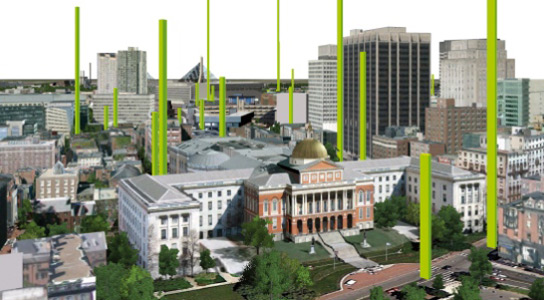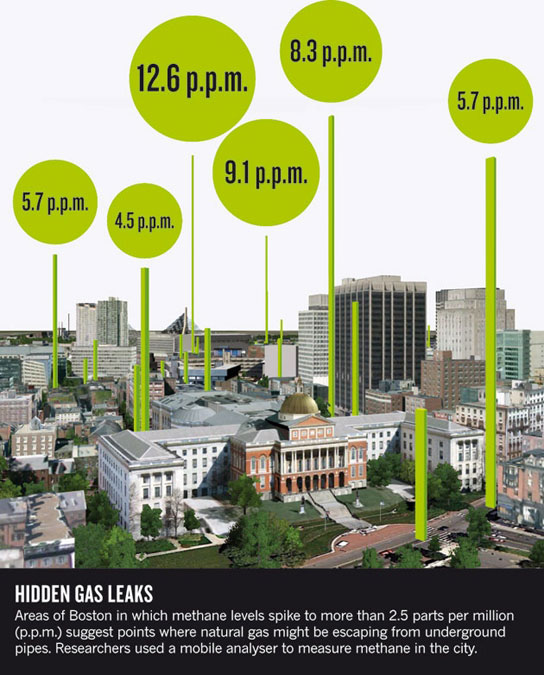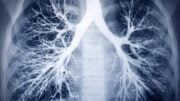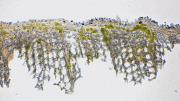
In cities, a gas mixture forms an atmospheric dome over urban areas. Ecologists in Boston are sampling sites to compare levels of carbon dioxide, carbon monoxide, methane, and water vapor. Credit: Phillips, N. G. et al. Environ. Pollut.
Most cities brew up a blend of gases that covers the urban area like a dome. The top of most buildings can sit outside or inside this metropolitan atmosphere, depending on the weather. Ecologists are sampling sites around Boston in order to compare levels of carbon dioxide, carbon monoxide, methane, and water vapor.
Roofs are a different atmospheric environment from the rest of the city, states Nathan Phillips, an ecologist at Boston University, in Massachusetts. Phillips has set up collectors in order to capture the air blowing across Boston.
Phillips and his colleagues are using the data to model how carbon dioxide and other gases move through the city, and how this particular mix differs from the one in rural areas. The work is part of a study trying to model the city’s “metabolism.” Next, they will look at carbon in the city’s soils and water, and track the flow of water, nitrogen, and pollutants.

Infographic. Credit: Nature, Phillips, N. G. et al. Environ. Pollut.
This is part of the field of urban ecology, in which scientists study different cities as if they were ecosystems. Previously, artificial and natural elements were studied separately. Urban ecologists seek to understand the interplay between these elements, like how heat and high carbon dioxide levels boost plant growth and how trees cool cities.
This could make cities more sustainable. Boston contains nearly 2 million trees, tons of soil, microbes, and wildlife like rats, coyotes, deer, and more than 100 bird species. This makes for complex relationships.
There is a demand for urban ecology science and data. Paige Warren, ecologist at the University of Massachusetts in Amherst, is trying to assess how planting vegetation throughout the city has affected air quality, people, and wildlife.
Phillips and his team are also sampling carbon dioxide levels throughout the city, using mobile sampling devices. These studies could be important in order to reduce greenhouse-gas pollution, since cities are responsible for more than two-thirds of global carbon dioxide emissions from energy use. In the US, road transportation is supposed to account for a third of all greenhouse-gas emissions, but credible inventories can differ by nearly 40%.
Some of the findings indicate that traffic emissions in the core of the city are higher than previously estimated.
The estimates from Phillips indicate that Boston averages 388 parts per million of carbon dioxide in the summer and 413 p.p.m. in winter.









Be the first to comment on "Ecologists Explore Interactions of People, Buildings, Wildlife & Pollution"